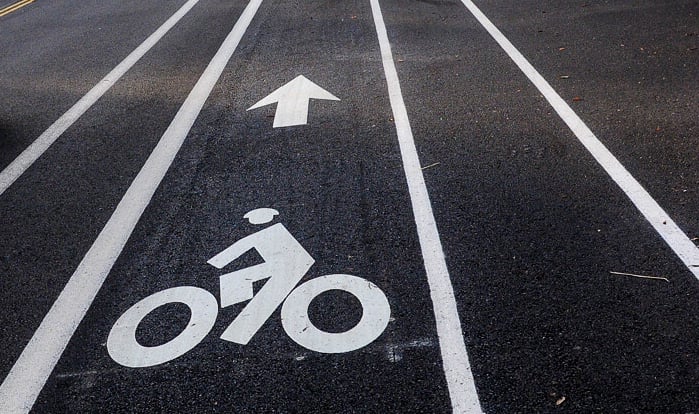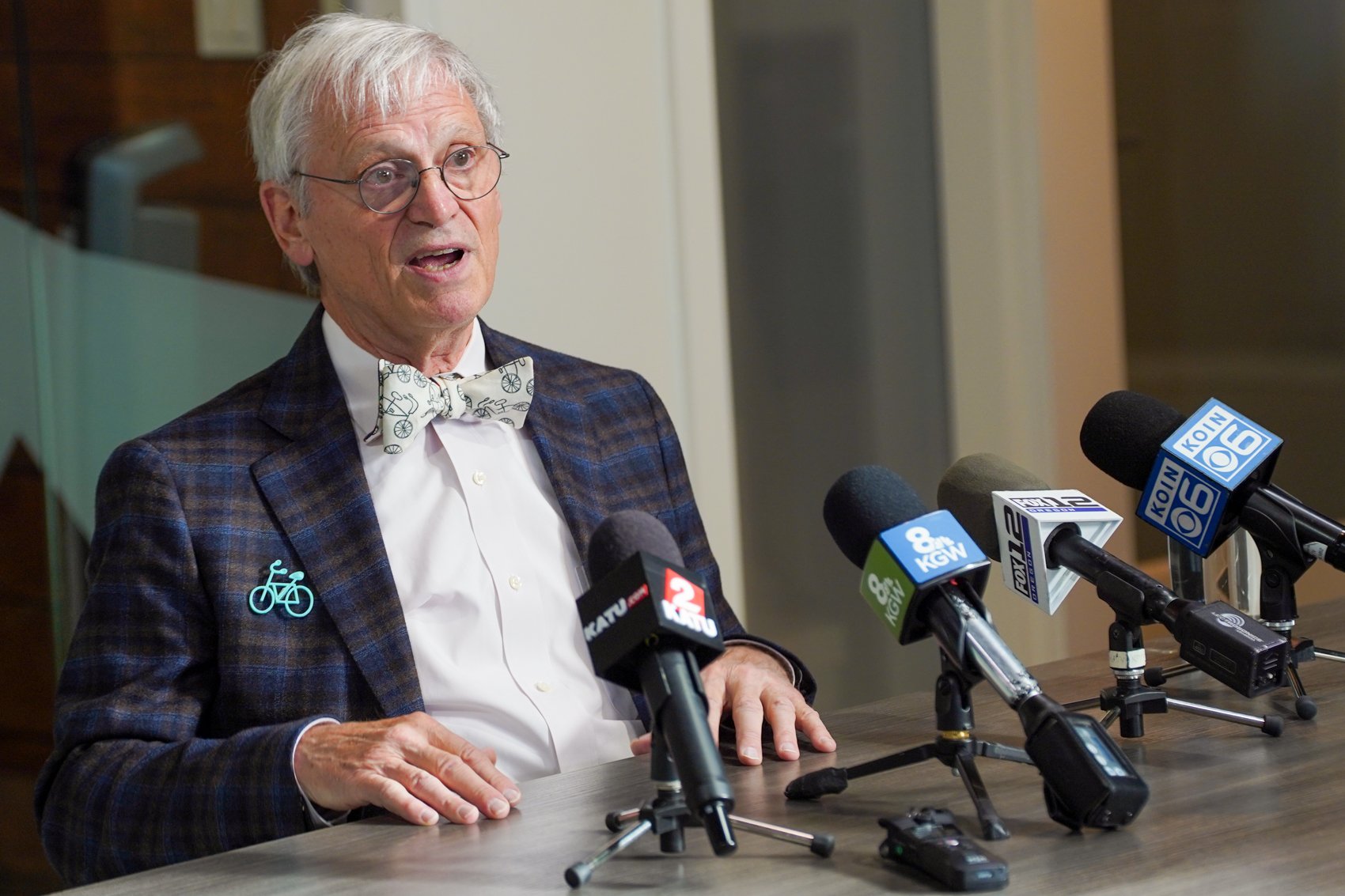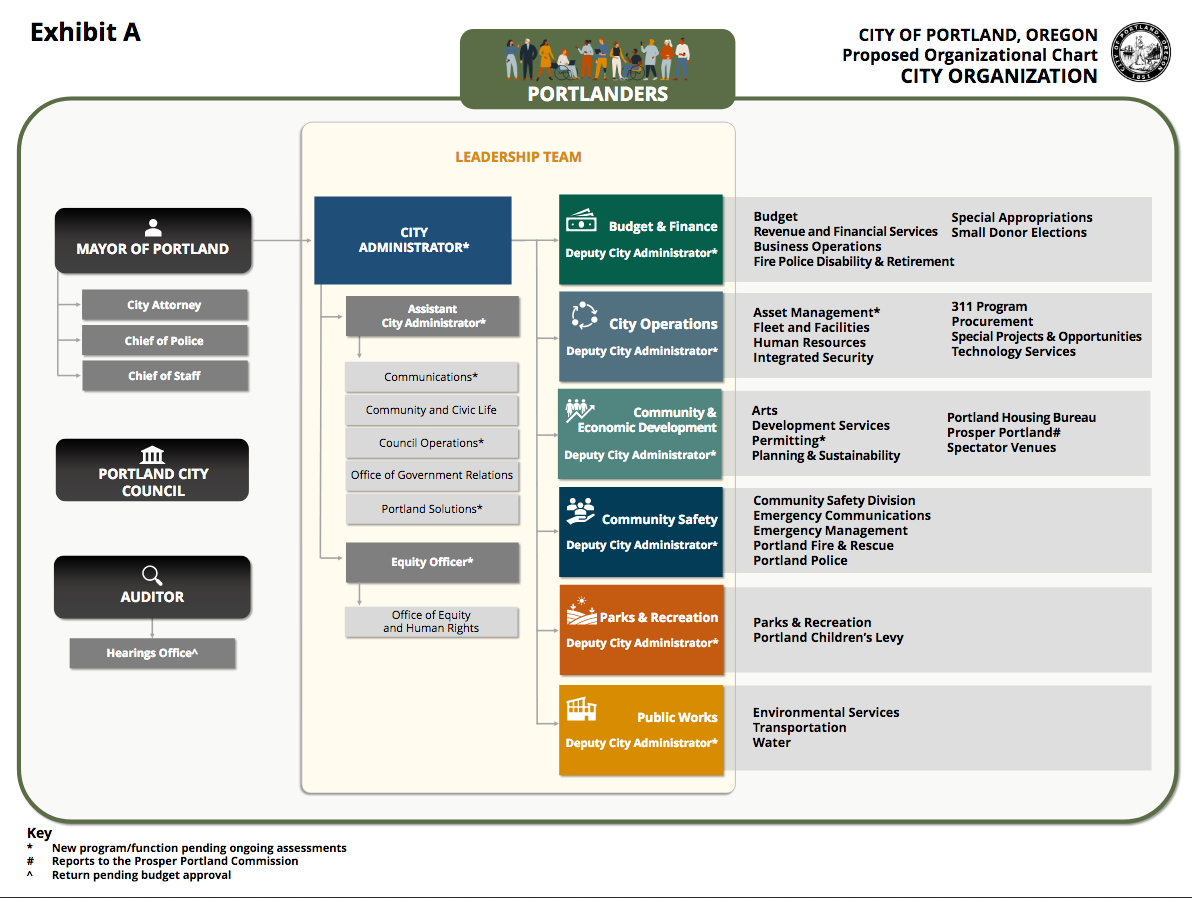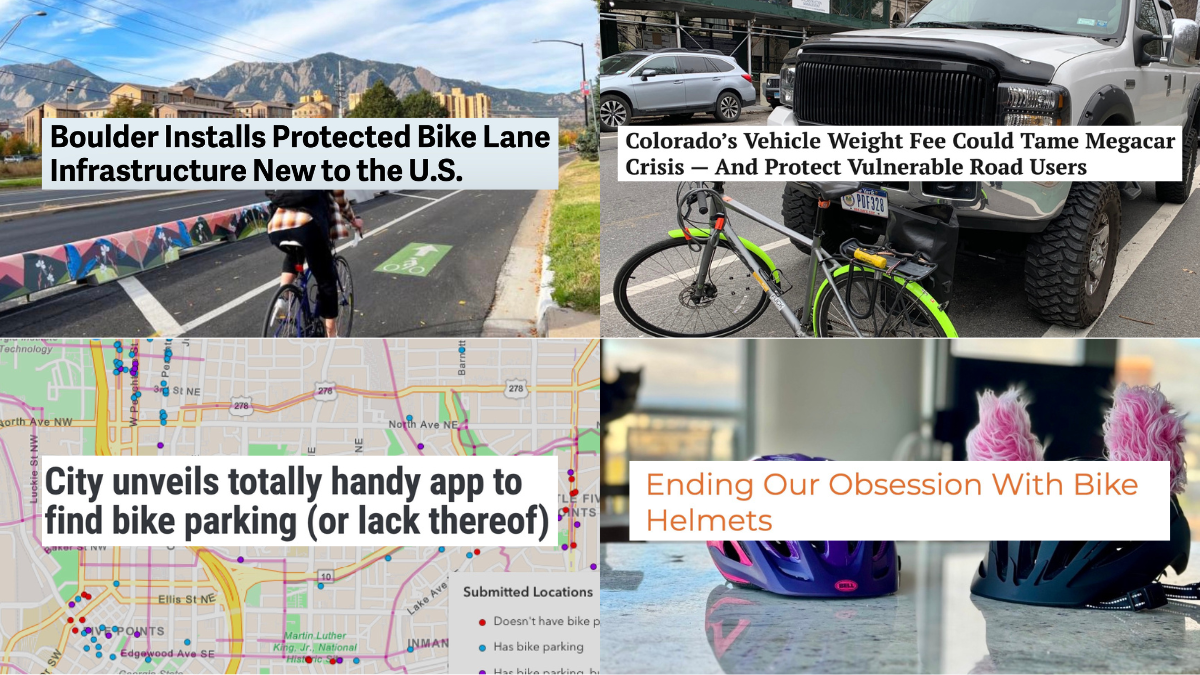New buffered bike lanes on Northeast 33rd Avenue that have only been installed for about one month are slated for removal by the Portland Bureau of Transportation. That’s according to a source who works at the bureau and who shared the information with BikePortland anonymously because they aren’t authorized to speak to the media.
In addition to the source I’ve had direct contact with, the news has spread into the community from other sources and is widely known internally at PBOT. I’ve asked PBOT to confirm or deny the tip, but they have not yet responded.
Here’s the backstory and what I know right now…
PBOT repaved NE 33rd Avenue between NE Knott and Columbia Blvd this summer. As part of that project, they restriped the road and added bike lanes in several sections. We’ve reported on the new bikeway on 33rd between Skidmore and Mason*, but I hadn’t been able to get to the new bike lanes between NE Holman and Dekum (just south of Columbia Blvd overpass) until this morning. (*Keep in mind, this story is only about the northern section of new bike lanes between Holman and Dekum, not the new crossing at Mason-Skidmore. That went through a robust neighborhood process and appears to be safe.)
I was motivated to finally go see the new lanes because a source at PBOT said they plan to be removed sometime this week.
The reason? Apparently it stems from bureau leadership saying that proper neighborhood notifications had not been sent out.





My source at PBOT says crews could come out and remove the new bike lanes as early as tomorrow (Wednesday, 11/1).
I saw “No Parking” notifications on the blocks in question during my visit today. The signs say crews will be on hand November 1 through November 3rd.
These new bike lanes were celebrated by some when they were installed in late September. Holman is a major, east-west neighborhood greenway route, and 33rd is a vital gateway to the Marine Drive bike path. The bike lane gap between Holman and the bike lanes on the Lombard/Columbia overpass (and Marine Dr) was always a stressful spot. The new bike lanes closed that gap and created a safer street. This section of 33rd is also classified as a “City Bikeway” in the Portland Transportation System Plan (adopted in 2020).
Bike lanes on this section of NE 33rd were also recommended in PBOT’s Columbia/Lombard Mobility Corridor Plan adopted by City Council in 2021. Bike lanes between Holman and the bridge were called out as a “high readiness” recommendation (see graphic at right).
Parking doesn’t seem to be in particularly high demand on these few blocks (although I’ve noticed at least one person who’s parked in the new bike lane every time I’ve been by). It’s zoned single-family and nearly all the houses have driveways. There are two businesses on the northeast corner of Holman and 33rd; a quickie-mart and a restaurant, but both are served by a relatively large parking lot. I’m not aware of any simmering neighborhood revolt or pushback to the project. That being said, these bike lanes did go in relatively quietly and I don’t recall any specific messaging or notice from PBOT about them.
Even if proper public notice wasn’t given, it’s unclear why PBOT would resort to taking the bike lanes out. If this story is confirmed, it would be another cause for concern given that it comes just about five weeks after PBOT Director Millicent Williams was forced to apologize after a plan hatched by Transportation Commissioner Mingus Mapps to roll back the design of the Broadway bike lanes was met with outcry by the community.
I’ve asked PBOT to clarify what’s going on and will update this story when I hear back. I decided to publish this story before hearing back because I have reason to believe the removal of the bike lane could begin as soon as tomorrow (Wednesday, 11/1). Stay tuned.
UPDATE, 5:11 pm: PBOT has confirmed the removal and Communications Director Hannah Schafer just shared this statement:
“This segment of bike lane was installed by mistake and will be removed. A change of this magnitude would only come after significant public outreach, which did not happen as part of this maintenance project. PBOT is investigating and reevaluating its work process to make sure this costly mistake does not occur again.”
UPDATE, 11/1: BikeLoud PDX has sent out an action alert. They will meet for a ride to inspect the bike lane and then have a strategy meeting this morning on how to respond. Read the action alert here.
UPDATE, 11/1: Just posted this video of the bike lane to give you a better sense of what is at stake:




























